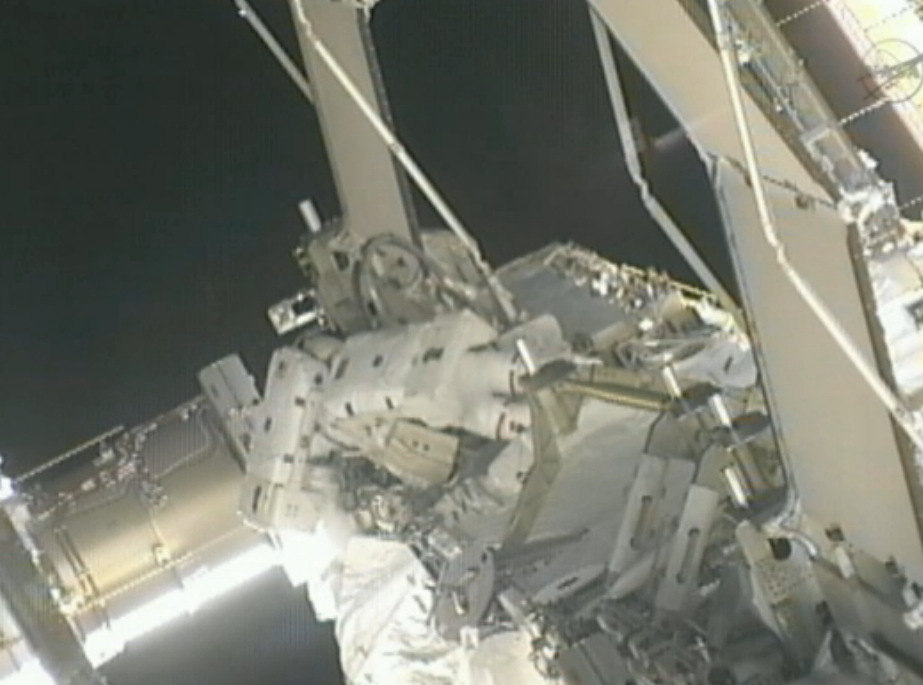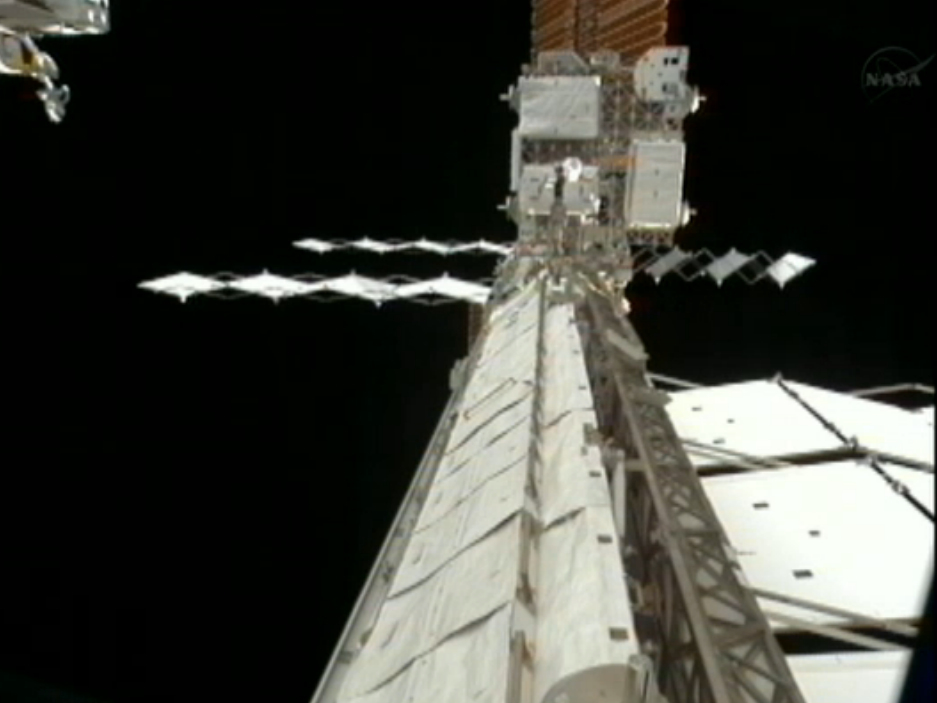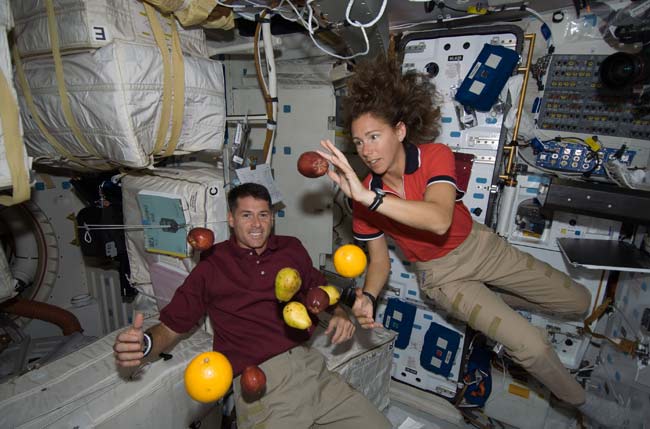
Two spacewalking astronauts troubleshot an ammonia leak in the International Space Station's cooling system today (Nov. 1), accomplishing the chief objective of their marathon excursion outside the orbiting lab.
NASA astronaut Sunita Williams and Japanese spaceflyer Akihiko Hoshide ventured outside the space station at 8:29 a.m. EDT (1229 GMT) today. A little more than five hours later, they had reconfigured some coolant lines and deployed a spare radiator, isolating the leak.
"Suni and Aki, heartfelt congratulations to you," NASA astronaut Mike Fincke, who helped walk the astronauts through their tasks from mission control at the agency's Johnson Space Center in Houston, said at 1:41 p.m. EDT (1741 GMT). "We accomplished just about everything we set out to do today."
"A big, huge congratulations to you guys on the ground for putting this together," Williams responded. [Gallery: Building the International Space Station]
Today's spacewalk was slated to last about 6 1/2 hours, and it proceeded pretty much on schedule. By 2:58 p.m. EDT (1958 GMT), both astronauts had re-entered the space station through its airlock, and the spacewalk was officially over nine minutes later.

Finding the leak
Each of the space station's eight huge solar panels has its own associated power system, and circulating ammonia helps cool this gear down. The leak, which NASA and its space station partners first noticed in 2007, has the potential to affect one of these power channels if it's not fixed.
Get the Space.com Newsletter
Breaking space news, the latest updates on rocket launches, skywatching events and more!
Today's spacewalk, or extra-vehicular activity (EVA), is a crucial step in that process.
At the start of the spacewalk, Williams — commander of the station's current Expedition 33 — and Hoshide made their way over to the port side of the station's backbone-like truss. They rejiggered some lines in the affected coolant system and installed a spare radiator.
NASA officials hope this stops the leak, which they suspect may be coming from the old (swapped-out) radiator.
"We're real suspicious of the radiator," spacewalk flight director Mike Lammers, of Johnson Space Center, told reporters last Friday (Oct. 26) during a pre-spacewalk press conference. "It kind of stretches out there and is susceptible to micrometeorite impacts."

The waiting game
Because the leak is so slow, it will likely be several weeks before it's known if the fix works, officials have said.
If ammonia continues to escape, the station's operators will eventually have to try something else. For example, astronauts may need to swap out some of the coolant system's pump gear on another spacewalk. But there likely won't be an urgent need for a new fix, since the spare radiator should provide enough ammonia to keep the coolant system operating until next October or so, officials said.
It should come as no surprise that Williams and Hoshide ticked off their tasks efficiently today, for the two are seasoned spacewalkers. In late August and early September, they replaced a vital power unit on the station over the course of two spacewalks, defeating an unexpectedly stubborn stuck bolt in the process.
Today's EVA was the seventh for Williams, the third for Hoshide and the 138th to depart from the station overall.
Follow SPACE.com senior writer Mike Wall on Twitter @michaeldwall or SPACE.com @Spacedotcom. We're also on Facebook and Google+.
Join our Space Forums to keep talking space on the latest missions, night sky and more! And if you have a news tip, correction or comment, let us know at: community@space.com.

Michael Wall is a Senior Space Writer with Space.com and joined the team in 2010. He primarily covers exoplanets, spaceflight and military space, but has been known to dabble in the space art beat. His book about the search for alien life, "Out There," was published on Nov. 13, 2018. Before becoming a science writer, Michael worked as a herpetologist and wildlife biologist. He has a Ph.D. in evolutionary biology from the University of Sydney, Australia, a bachelor's degree from the University of Arizona, and a graduate certificate in science writing from the University of California, Santa Cruz. To find out what his latest project is, you can follow Michael on Twitter.









